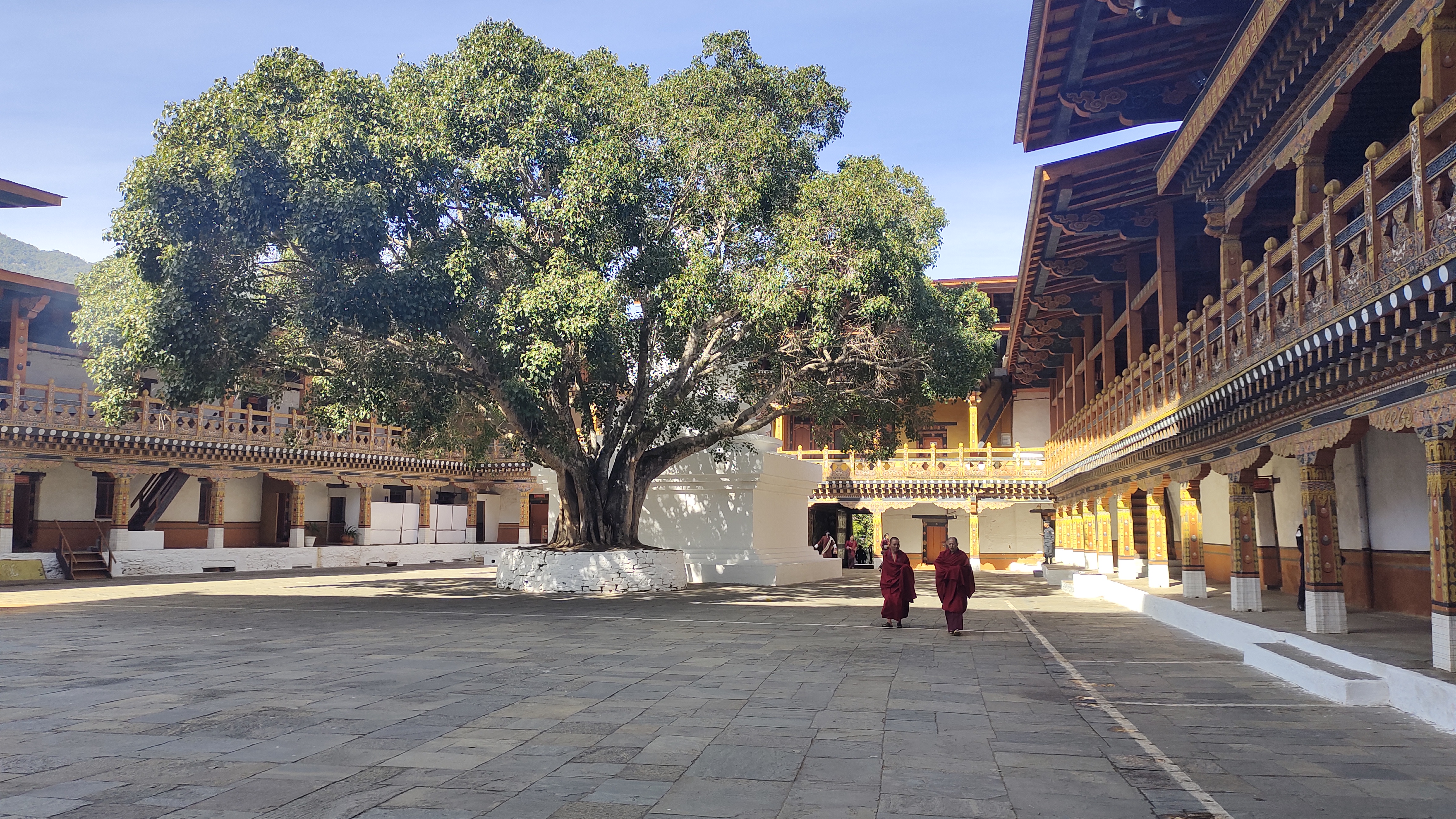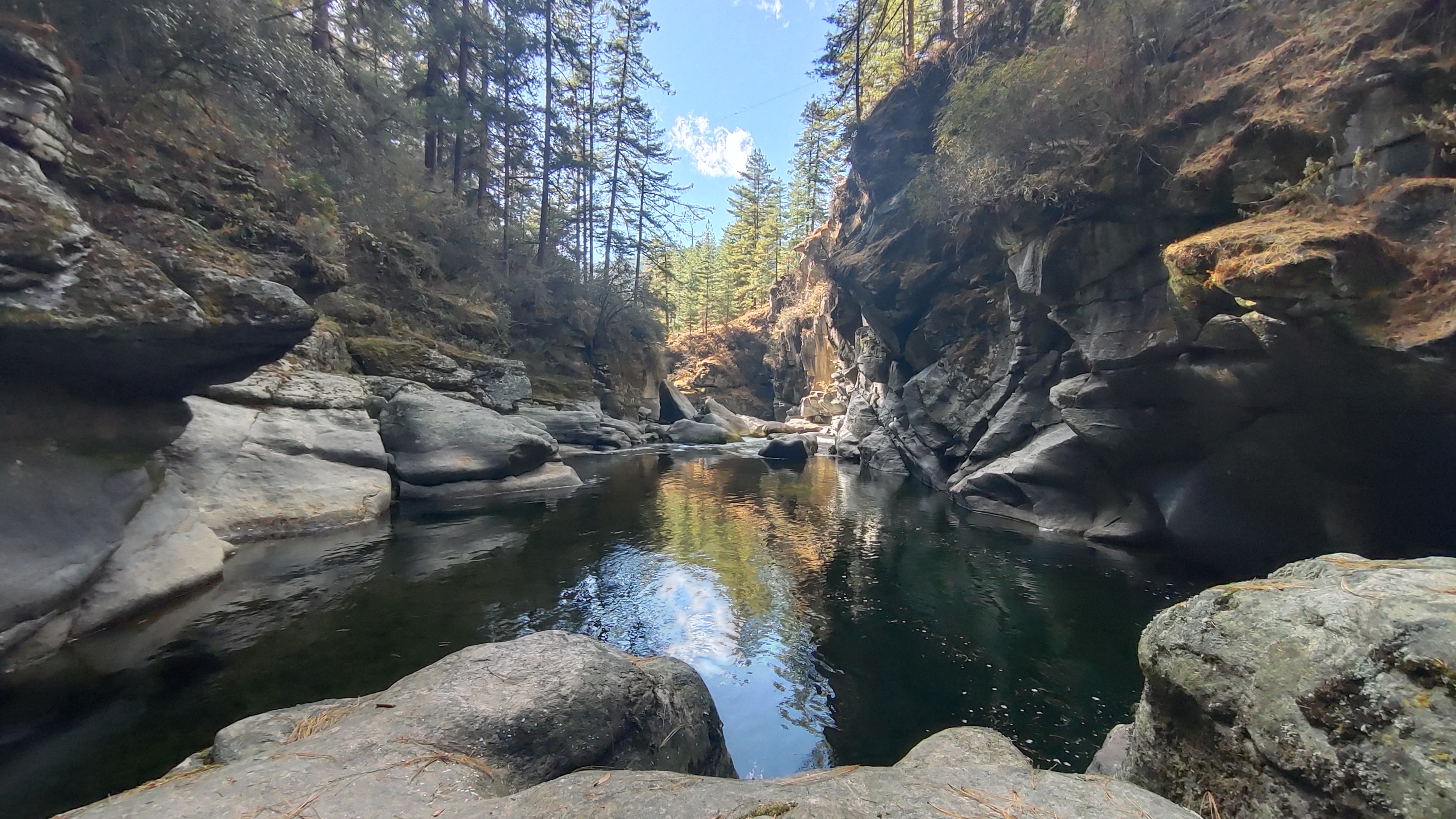Paro Tsechu is one of Bhutan’s most vibrant and culturally significant festivals, attracting travelers and spiritual seekers from around the world. This festival is a unique opportunity to witness Bhutan’s living culture, where you can enjoy traditional dances, captivating costumes, and mesmerizing performances by both monks and laymen. Tsechus are celebrated in honor of Guru Rinpoche, the saint credited with bringing Buddhism to Bhutan.
A key highlight of the Paro Tsechu is the grand unveiling of the Thangka, a large silk religious scroll so enormous that it covers the entire face of a building. This sacred piece of art is displayed only once a year, on the final day of the festival, at daybreak. Locally known as a Thongdroel, it is believed to bestow blessings and confer liberation simply by being seen. This incredible moment offers spiritual significance for Bhutanese people and visitors alike.
Beyond the festival, this tour also takes you through Bhutan’s stunning natural beauty. You'll hike through lush Rhododendron forests in Phobjikha Valley, experience the vibrant Rhododendron Festival near Dochula Pass, and explore sacred sites in Paro, Thimphu, and Punakha. The combination of cultural immersion and breathtaking landscapes makes this a once-in-a-lifetime opportunity to experience Bhutan like never before.
Tour Itinerary:
Day 1: Arrival in Paro
Arrive in Paro, the gateway to Bhutan. Your adventure begins as you land in this picturesque valley, surrounded by towering mountains and lush greenery. Enjoy a warm welcome and transfer to your accommodation to relax and prepare for the exciting days ahead.
Day 2: Explore Paro
Discover the spiritual heart of Paro. Visit ancient monasteries, temples, and enjoy the serene beauty of the valley. Immerse yourself in the rich culture and history of Bhutan as you prepare for the grand festival celebrations.
Day 3: Paro to Thimphu
Travel to Thimphu, Bhutan's capital, and experience the dynamic culture of this bustling city. Explore local attractions, including the Buddha Dordenma statue, Tashichho Dzong, and the National Memorial Chorten. End the day with a scenic drive to your hotel.
Day 4: Explore Thimphu
Delve deeper into Thimphu’s cultural treasures with visits to the Simtokha Dzong, Simply Bhutan Museum, and Sangaygang. Enjoy breathtaking views of the city and the surrounding mountains, and experience the beauty of Bhutan’s traditional architecture and crafts.
Day 5: Thimphu to Phobjikha Valley
Embark on a scenic journey to Phobjikha Valley, famous for its natural beauty and the Black-Necked Cranes that migrate here every winter. Explore the Gangtey Monastery and take a peaceful walk through the valley, surrounded by dense forests and stunning mountain landscapes.
Day 6: Phobjikha Valley to Punakha
Travel to Punakha, the former capital of Bhutan, and visit the majestic Punakha Dzong. Positioned at the confluence of the Pho Chhu and Mo Chhu rivers, the dzong is one of Bhutan’s most beautiful and historically significant structures. Explore local villages and experience Bhutanese hospitality at its finest.
Day 7: Explore Punakha
Discover more of Punakha’s natural and cultural highlights. Visit the Khamsum Yuley Temple, hike through lush landscapes, and enjoy a traditional Bhutanese meal with a local family. The spiritual and cultural atmosphere of Punakha offers deep insight into Bhutan’s way of life.
Day 8: Punakha to Paro
Return to Paro, where you will visit sacred sites such as the Kyichu Lhakhang, one of the oldest temples in Bhutan. Reflect on your journey through Bhutan’s cultural and spiritual heart before preparing for your departure.
Day 9: Depart Paro
Bid farewell to Bhutan and reflect on the unforgettable memories created during this incredible journey. Whether it's the vibrant Paro Tsechu, the stunning natural landscapes, or the rich cultural experiences, Bhutan will leave a lasting impression.

















